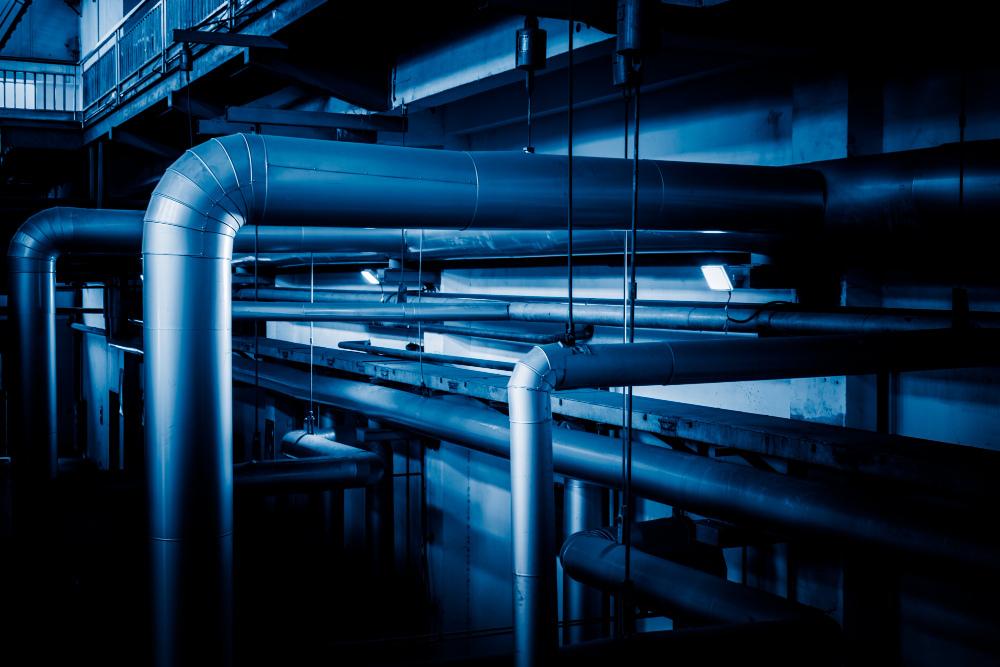Air-operated double diaphragm pumps are extensively utilized across various industry due to their adaptability capacity to manage an array of fluids and sturdy construction. Nonetheless like any equipment they come with their set of difficulties. One common challenge that operators of air-operated double diaphragm pumps encounter is the occurrence of muffler icing. This issue can result in decreased performance, higher maintenance expenses and potential operational downtime. Let’s explore the reasons, behind muffler icing in air-operated double diaphragm pumps, approaches to prevent and address this issue.
Before we get into the details of muffler icing it’s important to grasp the concept, behind air-operated double diaphragm pumps. These pumps work by utilizing air to move two diaphragms in a back-and-forth motion. These diaphragms generate a vacuum that pulls in the liquid being pumped and then pushes it out through the discharge opening. The air that powers the diaphragms is released through a muffler to minimize noise levels.
The Mechanism Behind Muffler Icing
Muffler icing occurs when the temperature of the exhaust air drops below the freezing point of water, causing moisture in the air to condense and freeze. This process can be attributed to the Joule-Thomson effect, a thermodynamic phenomenon where a gas cools upon expanding. When compressed air is released from the high-pressure environment within the pump to the lower pressure environment outside, it expands and cools rapidly. If the exhaust air temperature drops below 0°C (32°F), any moisture present will freeze, leading to the formation of ice in the muffler.
Factors Contributing to Muffler Icing
Several factors contribute to the occurrence of muffler icing in Air-operated double diaphragm pumps:
- Humidity in Compressed Air: The primary factor is the presence of moisture in the compressed air. Even small amounts of water vapor can condense and freeze when the air expands and cools.
- Ambient Temperature: Low ambient temperatures increase the likelihood of muffler icing. In colder environments, the exhaust air cools more quickly, making it easier for ice to form.
- Air Pressure and Flow Rate: Higher air pressure and flow rates can exacerbate the cooling effect due to more significant expansion, increasing the chances of icing.
- Poor Air Quality: Contaminants in the compressed air, such as oil or dirt, can provide nucleation sites for ice formation, accelerating the icing process.
Consequences of Muffler Icing
Muffler icing can have several adverse effects on Air-operated double diaphragm pump operation:
- Reduced Performance: Ice formation can restrict the exhaust flow, leading to increased back pressure. This can reduce the efficiency and flow rate of the pump.
- Increased Wear and Tear: Restricted exhaust flow can cause the pump to work harder, increasing wear and tear on internal components and reducing the pump’s lifespan.
- Potential Downtime: Severe icing can cause complete blockages, leading to pump shutdown and unplanned downtime for de-icing and maintenance.
- Noise Increase: Icing in the muffler can also lead to increased noise levels as the exhaust air is forced through restricted passages.
How to Prevent and Mitigate Muffler Icing
Preventing and mitigating muffler icing involves addressing the factors that contribute to the problem. Here are several effective strategies:
- Air Preparation and Drying: Ensuring the compressed air is dry is the most critical step in preventing muffler icing. This can be achieved using air dryers, which remove moisture from the air before it enters the pump. Refrigerated air dryers, desiccant dryers, and membrane dryers are common options. Regular maintenance of air dryers is essential to ensure their effectiveness.
- Heat Tracing and Insulation: In environments where low ambient temperatures are a concern, heat tracing and insulation of the exhaust system can help prevent icing. Electric heat tracing cables can be wrapped around the muffler and exhaust lines to keep the temperature above freezing. Insulating these components helps retain heat and reduces the cooling effect of expanding air.
- Optimizing Air Pressure and Flow: Adjusting the air pressure and flow rate to the minimum required for the application can help reduce the cooling effect during expansion. This minimizes the temperature drop and the likelihood of ice formation.
- Using Low-Freezing Point Lubricants: If oil contamination in the compressed air is a concern, using low-freezing point lubricants can help reduce the risk of icing. These lubricants remain fluid at lower temperatures, preventing the formation of ice around contaminants.
- Regular Maintenance and Inspection: Routine maintenance and inspection of the air preparation system, including filters, dryers, and mufflers, are essential. Ensuring that all components are clean and functioning correctly helps maintain optimal performance and reduces the risk of icing.
- Muffler Design Improvements: Some Air-operated double diaphragm pump manufacturers offer mufflers with enhanced designs to reduce icing. These designs may include features such as larger surface areas for heat dissipation or materials with better thermal conductivity. Upgrading to a better-designed muffler can significantly reduce icing issues.
- Utilizing Exhaust Air Heaters: Installing exhaust air heaters can raise the temperature of the air exiting the muffler, preventing icing. These heaters can be integrated into the exhaust system and controlled to maintain the desired temperature.
- Environmental Control: In some cases, controlling the environment around the pump can help. Enclosing the pump and muffler in a heated space or using localized heating in cold environments can prevent the exhaust air from cooling rapidly.
Conclusion
Muffler icing in air-operated double diaphragm pumps is a common challenge that can impact pump performance and lead to increased maintenance costs and downtime. Understanding the factors that contribute to this phenomenon and implementing effective strategies can prevent and mitigate icing issues. Key measures include ensuring dry compressed air, using heat tracing and insulation, optimizing air pressure and flow, and regular maintenance. By addressing muffler icing proactively, operators can enhance the reliability and efficiency of Air-operated double diaphragm pumps, leading to smoother operations and reduced operational costs.



Get Social